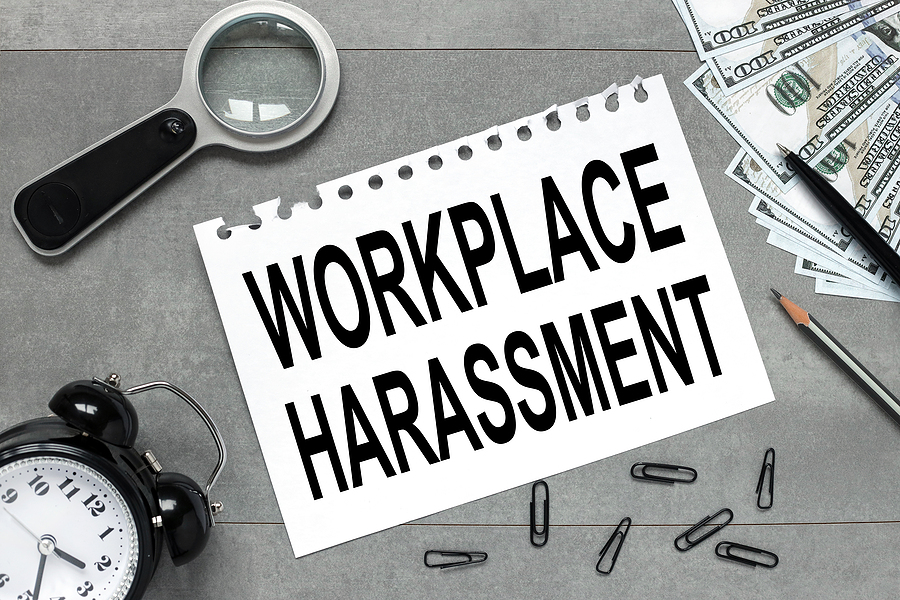The Benefits of a Harassment-Free Workplace

A harassment-free workplace is good for business because it maintains positive relationships between employees, which can improve productivity. Additionally, offensive, or harassing behavior can cause high anxiety levels and reduce employee morale. By ensuring that their workplace is free of harassment, employers can mitigate these effects and create a more positive work environment.
Harassment can lead to employee outrage and create problems that are difficult to resolve. To prevent this, organizations are turning to anti-harassment or harassment prevention training. This training aims to raise awareness of ongoing prejudice and harassment in the workplace to create a safe environment for all. A harassment-free workplace is beneficial for both employees and employers because it leads to a more productive and positive work environment. Additionally, employees who feel safe and respected are more likely to stay with an organization, which can save on turnover costs.
While harassment prevention training is a step in the right direction, it is important to note that this is only one part of creating a harassment-free workplace. Employers also need to have clear policies and procedures in place that define what behavior is considered harassment and how complaints will be handled. Additionally, employers should provide regular training on these policies and procedures to ensure that all employees are aware of them.
Employers should create an environment where employees feel comfortable reporting any incidents of harassment. By taking these steps, employers can create a harassment-free workplace that is beneficial for both employees and the organization as a whole.
What are the Advantages of a Harassment-Free Workplace?
Creating a harassment-free workplace is not only a moral responsibility but also has many practical benefits. Discrimination and injustice can have harmful effects on employees' physical and mental well-being, so it's important for companies to take measures to make their employees feel comfortable at work.
An environment free of harassment lets employees focus on their work and be more productive. When workers feel safe, respected, and valued, they are more likely to be engaged with their jobs and motivated to do their best. This can lead to increased productivity and profitability for the company as a whole.
A harassment-free workplace can also help to attract and retain top talent. In today's competitive job market, more and more employees are looking for employers who value diversity and provide a safe working environment. By creating a harassment-free workplace, companies can show that they are committed to these values and make themselves more attractive to prospective employees. Additionally, employees who feel comfortable and respected at work are more likely to stay with the company, which can save on turnover costs.
In a harassment-free workplace, workers can feel safe and comfortable discussing their objections with administrators. They are more likely to employ in-house channels for communication and will approach the supervisor before going to higher officials.
Creating a harassment-free workplace is not only good for the employees, but it's also good for the company as a whole. Expenses related to accusations of harassment can be much more economical than taking the statutory route, but if you have a harassment-free workplace, you can easily avoid these costs.
A harassment-free workplace provides several benefits for employers, including increased productivity and reduced absenteeism. Additionally, employees in a harassment-free workplace feel more secure and likely to remain with the company for an extended period. Finally, the employee turnover rate is also low in such workplaces.
Creating a harassment-free workplace is beneficial for businesses in many ways. Companies that are known for having respectful and tolerant work environments enjoy a high market prominence, better client, and buyer comfort ratings than their competitors, and happier employees.
What are Harassment Prevention Training Programs and How are They Significant?
A harassment-free workplace is beneficial for all employees. By providing training to help employees understand what constitutes harassment, and how to deal with any situation that may arise, we can create a more positive and productive work environment for everyone.
In addition, harassment prevention training can help employees feel secure at work and understand the importance of a harassment-free workplace. Unless workers understand that harassing behavior can ruin the unanimity of the entire workplace, they may not improve their behavior.
Harassment can lead to decreased productivity and a lack of profitability, as well as other negative consequences such as workers neglecting their tasks, increased absenteeism, and worker turnover. To create a harassment-free workplace, it's important to provide adequate anti-harassment training to all employees.
This type of training should include, but is not limited to, the following topics:
- What is harassment?
- The types of behavior that constitute harassment.
- The consequences of harassment.
- How to report incidents of harassment.
- How to deal with situations in which someone is being harassed.
- How to support someone who has been harassed.
To create a harassment-free workplace, it's important to have a clear understanding of what constitutes harassment. This can include, but is not limited to, offensive jokes, name-calling, physical threats or violence, unwelcome sexual advances, and repeated requests for dates after being turned down.
It's also important to know the types of behavior that may be considered harassment. For example, if an employee is constantly being asked to do personal favors for a supervisor that are not part of their job duties, this could be considered harassment.
Additionally, if an employee is made to feel uncomfortable by comments about their appearance or body, this could also be considered harassment.
Provide engaging harassment prevention training
It's important that your harassment prevention training is engaging and active, as well as having all employees and supervisors present in real-time. These are the best ways to make sure your team gets the most out of the experience.
Additionally, making sure the training is supervised by a trained mentor will help ensure that it remains effective.
Illustrate the outcomes of harassment
Some of the key risk factors that make it more likely for employees to tolerate intolerable behavior include a uniform workforce and workers who rely on rewards from customers. It's important for employers to stress how well these risk factors might enhance the possibility of harassment so that administrators can intervene before problems occur.
By doing so, businesses can avoid many potential legal liabilities and productive disruptions. In addition, a harassment-free workplace is simply more pleasant for everyone involved. Employees who feel respected and valued are more likely to be productive, happy, and committed to their jobs. Creating a positive and respectful work environment should be a top priority for any business.
Give examples
Administrators need to be careful not to over or under-broaden the definition of harassing behavior, as this can impact how effectively the company deals with any potential issues. It's important to provide examples of both severe and indirect harassment to ensure that everyone understands what is expected from them in the workplace.
How to Sustain a Harassment-Free Workplace
With due regard to the points already raised, there are a few more observations that will help to leverage the benefits of a harassment-free workplace.
- By drafting a memorandum reaffirming the company's dedication to just and equitable treatment of workers, posting copies of it in common spaces, and getting managerial endorsement, you can help ensure that everyone in your organization feels safe and respected.
- By engaging administrators and executives in open conversations about equal opportunity, businesses can show their workers that they are committed to providing a safe and secure working environment. This can help improve employee morale and productivity while reducing the likelihood of legal action being taken against the company.
- Creating a learning curriculum for executives and employees on labor and trade laws that prevent workplace prejudice and harassment can help to create a harassment-free workplace. Additionally, using various training techniques such as role-play and experiential training mechanisms can be helpful in getting the message across. It is also important to communicate that the company holds zero tolerance for workplace harassment of any sort, or for any reason.
- By ensuring that everyone is aware of what constitutes harassment and how to report it, we can create a more respectful and productive environment for everyone. Harassment does not just impact the individual who is experiencing it – it can also have a negative effect on those who witness it. In addition, anti-harassment training needs to cover much more than just sexual harassment. For example, employees should also be aware of harassment based on factors such as culture, social origin, faith, and disability.
- It's important to train new employees on how to avoid any kind of harassing behavior, as well as mandating regular refresher courses for all employees. This will serve to keep everyone more mindful of harassment and how to prevent it, making for a safer and more comfortable work environment for all. In addition, offering this kind of training sends a strong message to employees that their safety and well-being is a top priority for the company.
- By training executives on their obligations and emphasizing the importance of administrators' role in preventing harassment, we can help make sure that all employees feel safe and respected at work. It's also important to provide examples of corporations who have been held accountable for failing to address harassing conduct effectively.
- A printed workplace strategy against prejudice and harassment can help create a safer and more productive work environment. By communicating events to a superintendent, administrator, or human resources team member, employees can receive support if they experience any type of inappropriate conduct in the office. Additionally, assigning human resources professionals to handle grievances can provide victims with the necessary support during this difficult time.
- Creating and enforcing a policy against harassment in the workplace can have many benefits for both employers and employees. By establishing a clear procedure for how accusations of harassment will be handled, businesses can help ensure that any allegations are taken seriously and dealt with fairly. This, in turn, can help create a more positive and productive work environment for everyone.
In a Nutshell
Creating a harassment-free workplace is essential for fostering trust and understanding among employees. By eliminating any form of harassment or discrimination, employers can create an environment where everyone feels safe and respected. This can have many benefits for the organization.
